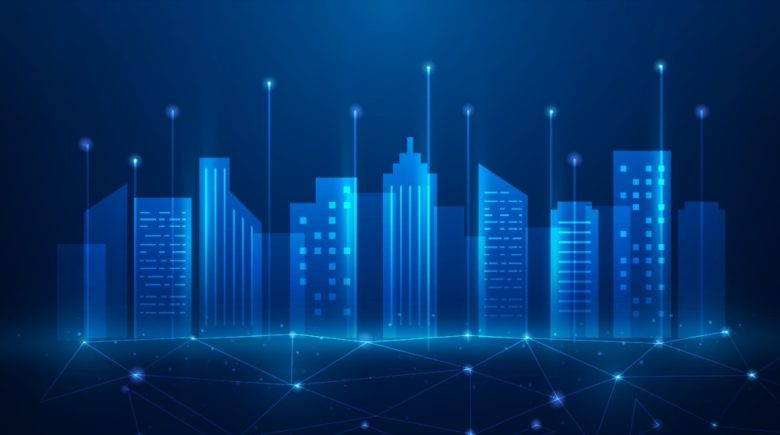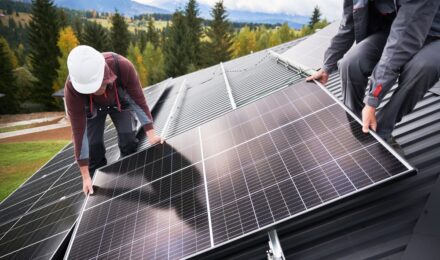Infrastructure today is far more than roads and bridges—it reflects innovation, sustainability, and economic transformation. In 2025, rapid urban growth and the expansion of digital technologies are placing new demands on infrastructure systems. Cities are adopting advanced technologies, governments are investing in climate-resilient projects, and public–private partnerships are channeling unprecedented funding into development. Understanding the current state of infrastructure allows individuals, businesses, and policymakers to envision a more connected, efficient, and resilient future.
1. The Evolution of Infrastructure in the 21st Century
Traditionally, infrastructure meant physical systems—roads, railways, water networks, power grids, and civic buildings. Today, it also includes digital infrastructure such as high-speed broadband, renewable energy facilities, and smart grids powered by sensors and analytics. As urbanization accelerates and societies transition to clean energy, infrastructure must evolve to meet modern needs.
In the U.S., the Infrastructure Investment and Jobs Act (IIJA), enacted in late 2021, is reshaping national priorities. By 2025, hundreds of billions of dollars are being invested in highways, rail systems, broadband expansion, EV charging networks, and more. This is not merely repair work – it is a transformative effort to build smarter, greener, and more inclusive systems.
2. Smart Infrastructure and Urban Development
Technology is at the heart of smart city development. Automated systems and real-time data are optimizing transportation, reducing environmental impact, and improving public services.
Bridges and roads are increasingly embedded with sensors that monitor structural health and alert authorities before costly repairs are needed. Smart traffic management adjusts signal timing based on current traffic flow, cutting congestion and emissions. Urban planners use virtual models to simulate new developments before breaking ground.
Broadband equity initiatives are connecting underserved rural and urban communities, ensuring everyone can participate in the digital economy. Together, these systems create cities that are more responsive, efficient, and sustainable.
3. Infrastructure and Climate Resilience
With climate change accelerating, resilience is a critical design priority. New materials and construction methods are helping infrastructure withstand extreme weather, rising seas, and other environmental threats.
Flood-prone cities are using permeable pavement to reduce runoff, while coastal areas are building storm surge barriers to protect homes and transport networks. Urban greening—through tree planting and green roofs—is lowering temperatures, cutting energy use, and improving air quality. Utilities are hardening power grids against wildfires, hurricanes, and heatwaves, ensuring reliability in a changing climate.
4. The New Economic Engine: Digital Infrastructure
High-speed internet is now as essential as roads and electricity. Remote work, online education, telemedicine, and e-commerce all depend on strong digital networks.
In 2025, the U.S. is expanding fiber-optic lines, rolling out 5G coverage, and closing the rural connectivity gap. This expansion supports job creation, small business growth, and access to global markets. Digital infrastructure now includes cloud computing, data centers, and cybersecurity—foundations for economic competitiveness in the modern era.
5. Electrification and Transportation Efficiency
Consumer demand for greener transportation, combined with climate goals, is transforming mobility. EV charging infrastructure is expanding rapidly, with tens of thousands of stations funded by public and private investment.
High-speed rail and mass transit projects are gaining momentum, with cities like Dallas, Miami, and San Francisco extending rail networks to reduce car dependency. Automated bus rapid transit systems are improving mobility while cutting emissions. Airports and seaports are also modernizing, adopting electric ground fleets, advanced security systems, and more sustainable operations.
6. Water and Energy Infrastructure
Aging systems and growing demand are pushing water and energy infrastructure to the forefront of national priorities.
Smart water networks now feature automated leak detection, reducing waste and ensuring safe delivery. Cities are adopting low-energy purification systems for cleaner water. Renewable energy sources—solar, wind, and battery storage—are becoming major contributors to the power grid. Smart meters help customers track and reduce consumption, while microgrids provide reliable local power in disaster-prone or remote areas. These innovations are making essential utilities cleaner, more efficient, and more reliable.
7. Public–Private Partnerships and Financing
Infrastructure projects are expensive, and traditional public funding is often insufficient. Public–private partnerships (PPPs) are becoming more common, with private companies investing in exchange for future revenue or performance incentives.
Successful PPPs are emerging in toll roads, renewable energy projects, and airport upgrades. While these models bring efficiency and reduce taxpayer burdens, governments must ensure transparency and equitable access.
8. Equity, Innovation, and Execution
Despite progress, challenges remain. Infrastructure investment must be distributed fairly to avoid widening social inequalities, especially in underserved rural areas, Native lands, and historically marginalized communities.
Regulatory frameworks must keep pace with technological innovation, including AI-driven construction, autonomous vehicles, and advanced energy storage. Workforce development is another priority, as high-tech infrastructure demands skilled labor. Faster permitting, better planning, and stronger collaboration between public and private sectors will be essential for timely and effective project delivery.
Conclusion
Infrastructure is no longer a background system—it is a strategic driver of how people live, work, and thrive. From smart cities and resilient water systems to connected highways and renewable energy, the foundations of the future are being built today.
The shift toward sustainable, inclusive, and intelligent infrastructure will shape both national economies and future generations’ quality of life. As technology advances and climate challenges intensify, modernizing infrastructure is not optional—it is essential. By investing with purpose, we can foster growth, strengthen resilience, and build a more secure world.
References
1. The White House. FACT SHEET: The Bipartisan Infrastructure Deal.
2. American Society of Civil Engineers. Report Card for America’s Infrastructure.
3. U.S. Department of Transportation. Building a Better America: Bipartisan Infrastructure Law.

